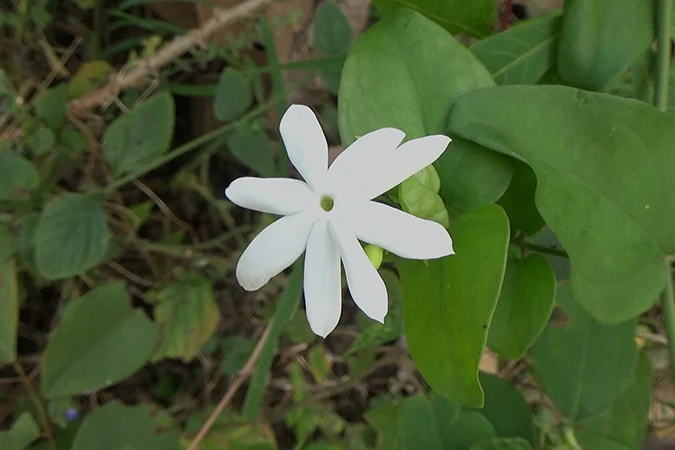Banjar jasmine (Jasminum cordifolium) is a species of plant in the Oleaceae, a shrub with fallen stems, elongated heart-shaped leaves, white flowers with 8 ears, growing in hills or forest slopes and agricultural land.
J. cordifolium has a cylindrical stem, slender, lying or climbing surrounding plants, about 3 meters long, generally unbranched, dark green and brownish at the base.
The leaves have a stalk 0.5 cm long and opposite. Strands heart-shaped at base, elongated and slender or broad, ends pointed or rounded or truncated, thick, flat margins, a bony center with 3-4 lateral veins and dark green upper surface.
The flowers have tubular stems and are green. The crown is fan-shaped, white, has about 8 ears, elongated, rounded ends and the middle has an open passage.
Kingdom: Plantae
Phylum: Tracheophyta
Subphylum: Angiospermae
Class: Magnoliopsida
Order: Lamiales
Family: Oleaceae
Genus: Jasminum
Species: Jasminum cordifolium
J. cordifolium has a cylindrical stem, slender, lying or climbing surrounding plants, about 3 meters long, generally unbranched, dark green and brownish at the base.
The leaves have a stalk 0.5 cm long and opposite. Strands heart-shaped at base, elongated and slender or broad, ends pointed or rounded or truncated, thick, flat margins, a bony center with 3-4 lateral veins and dark green upper surface.
The flowers have tubular stems and are green. The crown is fan-shaped, white, has about 8 ears, elongated, rounded ends and the middle has an open passage.
Kingdom: Plantae
Phylum: Tracheophyta
Subphylum: Angiospermae
Class: Magnoliopsida
Order: Lamiales
Family: Oleaceae
Genus: Jasminum
Species: Jasminum cordifolium
